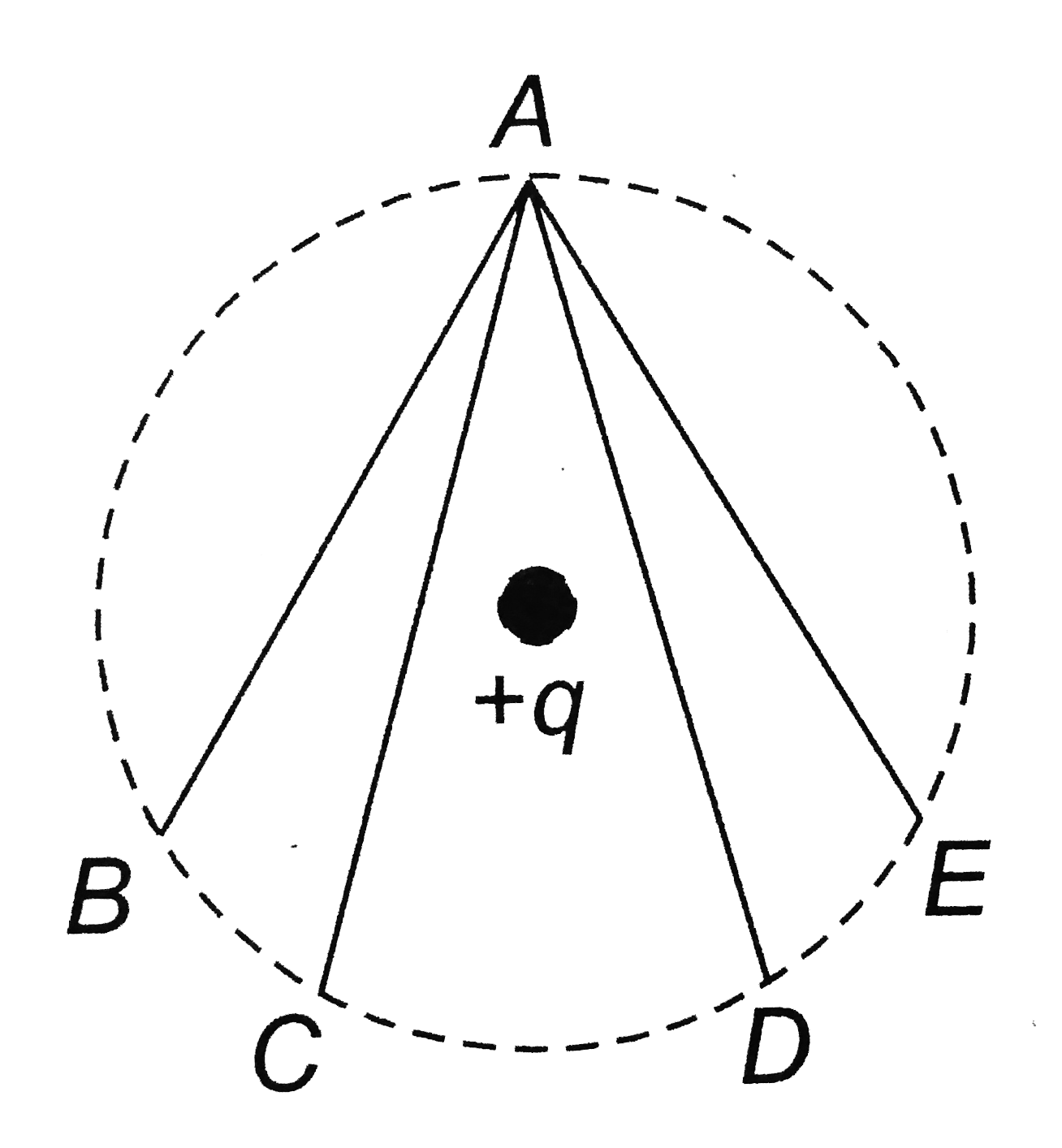An electron is taken from point A to point B along the path AB in a uniform electric field of intensity . Side AB=5m, and side BC=3m. Then the amount of work done on the elecltron is

The correct Answer is:B
should be zero, because in moving from C to B, we always move perpendicular to field. Hence, force applied by field and displacemnet will be at .
So
Topper's Solved these Questions
- ELECTROSTATIC POTENTIAL AND CAPACITANCEBOOK - DISHA PUBLICATIONCHAPTER - ELECTROSTATIC POTENTIAL AND CAPACITANCEEXERCISE - EXERCISE -1: CONCEPT BUILDER
58 Videos
- ELECTROMAGNETIC WAVESBOOK - DISHA PUBLICATIONCHAPTER - ELECTROMAGNETIC WAVESEXERCISE - Exercise - 2 : Concept Applicator
30 Videos
- GRAVITATIONBOOK - DISHA PUBLICATIONCHAPTER - GRAVITATIONEXERCISE - EXERCISE-2
30 Videos
Similar Questions
An electron is taken from point A to point B along the path A B in a uniform electric field of intensity E=10Vm−1 side AB=5m, and side BC=3m. Then, the amount of work done on the electron by us is.
 .
.
View SolutionAn electron entering field normally with a velocity 4×107ms−1 travels a distance of 0.10 m in an electric field of intensity 3200Vm−1. What is the deviation from its path?
View Solution
Knowledge Check
An electron is taken from point A to point B along the path A B in a uniform electric field of intensity E=10Vm−1 side AB=5m, and side BC=3m. Then, the amount of work done on the electron by us is.
 .A50 eVB40 eVC−50eVD−40eV
.A50 eVB40 eVC−50eVD−40eVAn electron entering field normally with a velocity 4×107ms−1 travels a distance of 0.10 m in an electric field of intensity 3200Vm−1. What is the deviation from its path?
A1.76mmB17.6mmC176mmD0.176mmThe work done in carrying an electron from point A to a point B in an electric is 10 MJ. The potential difference (VB−VA) is then
A+2kVB−2kVC+200VDNone of these
A point charge is taken from a point A to a pint B in an electric field. Does the work done by the electric field depend on the path of the charge ?
View SolutionA point charge is taken from a pint A to a pint B in an electric field. Does the work done by the electric field depend on the path of the charge ?
View SolutionIn the electric field of a point chargde q, a cetrain charge is carried from point A to B,C,D and E. Then the work done

View SolutionIn the electric field of a point charge (+q) , placed at the centre of a circle , a certain test charge is carried from point A to B, C,D and E Least amount of work is done along the path

View SolutionIn the electric field of a point charge (+q) , placed at the centre of a circle , a certain test charge is carried from point A to B, C,D and E Least amount of work is done along the path

View Solution
